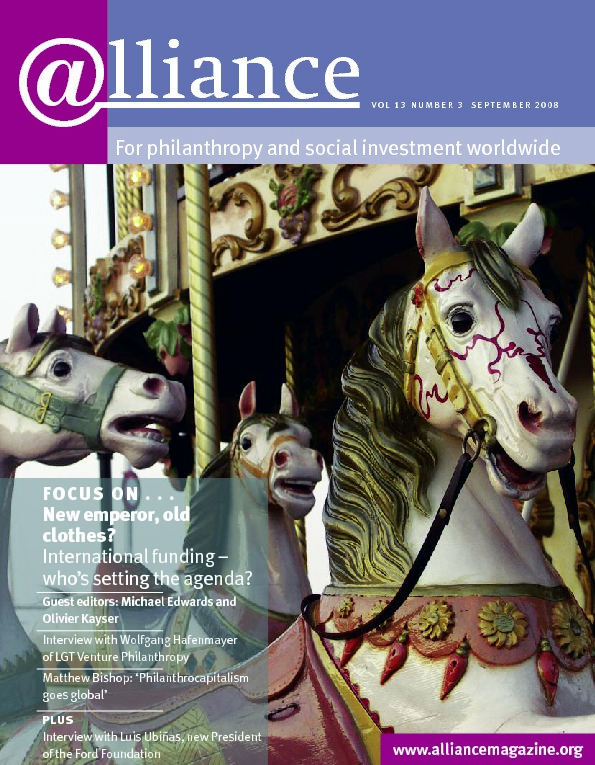 In 2008, there was no escaping the global recession in the Arab region, especially in the Gulf Cooperation Council countries, better known as the Gulf states. The local economies are in a dire situation. The drop in oil prices, along with the severe downturn in local stock markets and the drop in demand for real estate, has sobered the excessive spending habits often associated with the Gulf.
In 2008, there was no escaping the global recession in the Arab region, especially in the Gulf Cooperation Council countries, better known as the Gulf states. The local economies are in a dire situation. The drop in oil prices, along with the severe downturn in local stock markets and the drop in demand for real estate, has sobered the excessive spending habits often associated with the Gulf.
The drop in assets of sovereign funds of up to 50 per cent mirrors the wealth destruction suffered throughout the region. Yet the response in financial giving to the current attack on Gaza has been simply unbelievable, with newspaper headlines blazoning huge cuts in local infrastructure spending side by side with massive pledges to rebuild in Gaza.
 To put this fundraising effort into a historical perspective, one must go back to the years of the Israeli-imposed blockade since 2006. Financial support to Gaza at that period was at most lukewarm. In the present emergency, however, instigated by the first reports of the Israeli attacks on Gaza, the Gulf reverberated with a cry for help which triggered an astonishing response. In Kuwait, National Assembly members pledged their January salaries to humanitarian relief – in defiance of government bans on fundraising. In the Emirates, Bahrain and Saudi Arabia, the governments coordinated with local chapters of the Red Crescent Society to hold telethons. Text messaging services were utilized as fundraising mechanisms. To date $86 million has been raised from the Emirates telethon, $4 million from a similar initiative in Bahrain, and $50 million in fundraising drives in Saudi Arabia. In Jordan, where local fundraising has never produced more than $15,000, the Welfare Association was able to raise more than $250,000 from events held by local community groups with the donations earmarked for Gaza.
To put this fundraising effort into a historical perspective, one must go back to the years of the Israeli-imposed blockade since 2006. Financial support to Gaza at that period was at most lukewarm. In the present emergency, however, instigated by the first reports of the Israeli attacks on Gaza, the Gulf reverberated with a cry for help which triggered an astonishing response. In Kuwait, National Assembly members pledged their January salaries to humanitarian relief – in defiance of government bans on fundraising. In the Emirates, Bahrain and Saudi Arabia, the governments coordinated with local chapters of the Red Crescent Society to hold telethons. Text messaging services were utilized as fundraising mechanisms. To date $86 million has been raised from the Emirates telethon, $4 million from a similar initiative in Bahrain, and $50 million in fundraising drives in Saudi Arabia. In Jordan, where local fundraising has never produced more than $15,000, the Welfare Association was able to raise more than $250,000 from events held by local community groups with the donations earmarked for Gaza.
The Arab TV networks played an important role in awakening people’s consciousness of the terrible events in Gaza. Most Arabs saw round-the-clock footage of military attacks, the suffering of the civilian population, the hermetic closure of Gaza, and the utter inability of Gazan families to find shelter. Live broadcasts made it possible to avoid the media censorship from which Arab countries normally suffer. People in the Arab countries watched and responded, faster than ever. Many families in the Gulf states rationalized their expenditure for 2009 to create savings and donated those savings to support people in Gaza.
What this shows is that no matter how severe the economic crunch, people are willing to make giving a priority when the cause, in this case Palestine, is close to their heart. Initial estimates indicate that Gaza will need more than $2 billion to rebuild, which means more orchestrated efforts will be needed to raise the required funds. To rebuild the shattered lives and hopes, however, will take significantly more than hard cash.
Atallah Kuttab is Director General of the Welfare Association, a Palestinian foundation registered in Switzerland working in Palestine and in refugee camps in Lebanon. Email kuttaba@awelfare.org.jo
Rana Sadik is a Palestinian social activist and Welfare Association Management Committee member. Email ranasadik1@yahoo.com
For more information
http://www.welfareassociation.org
International aid organizations likely to lose out in funding squeeze
International aid organizations are likely to feel the draught as cash-strapped US donors re-focus their giving closer to home. According to some pundits, US private donations, which amount to almost $6 billion a year to aid organizations, could drop by as much as 15 per cent annually over the next few years. Samuel Worthington, president of InterAction, a coalition of relief organizations, said groups providing aid overseas stand to lose as much as $1 billion a year in donations. As a sign of the worsening times, Mercy Corps launched a five-year capital campaign two years ago to build a global headquarters and strengthen its worldwide emergency response. To date, it has raised $8.85 million of the $25 million it was seeking from private donors. Corps officials also worry about a fall-off in donations supporting the organization’s regular operations. Donations from individuals fell from $2.4 million in September to under $2 million in both October and November. Contributions to Medical Teams International have likewise fallen about 3 per cent since July. According to the organization’s president, Bas Vanderzalm. ‘[Major donors] say if things don’t improve, they may need to reconsider what they’re able to give. I do think there will be increasing pressure on organizations like ours.’
For more information
http://fconline.foundationcenter.org/pnd/15016333/story
For more on solidarity, listen to our Alliance Audio podcast: Solidarity & Philanthropy.






Comments (0)